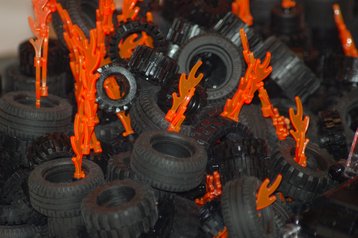A Fauquier County board supervisor accidentally identified the property for Point One’s proposed $1.6bn data center campus after receiving notice of an illegal tire dump, according to local news publication Fauquier Now.
One year later, and the property is one step closer to becoming a six-facility complex.
Luck is what happens when knowing about data centers meets opportunity
Upon visiting the site, District Lee supervisor Chris Butler realized that the 234-acre site was the ideal location for a data center: it was adjacent to a substation and a wastewater treatment plant – perfect for gray water cooling – and had easy access to fiber optic cables.
One of the property’s registered owners, Bob Springer, came to Butler by chance, as the two were already acquainted.
Springer, who had registered the property under the company name ‘Remland LLC’ wished to discuss letters he had received from the County’s rezoning administrator concerning the illegal tire dump, for which he said he was not responsible.
Butler then introduced the Springer brothers to Canadian real estate investment firm, Point One Holdings, and FTS Fiber, a Maryland-based company with plans to construct a cable network to Fauquier, and the rest is history.
The land was successfully rezoned, after its owners put an updated request to the Fauquier County Board of Supervisors in which they emphasized the relief on public services and the increased tax revenue the complex could bring.
Finally, Remland LLC sold the property to the data center developer for $7m.
The project still awaits planning permission from the county’s community development department, but if it is successful, Point One plans to build six data centers on the site, with a total floor space ranging between 1.5 and 1.8 million sq ft (or between 139,355 and 167,225 sq m).
The trust aims to complete the project - which it claims could be worth up to $1.6bn - by 2025 at the latest.
Meanwhile, the county hopes the development will generate close to $31m in tax revenue in the first six years, and create as many as 180 permanent jobs, and up to 200 temporary construction jobs.

